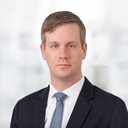In our first blog post, we outlined how organizations can leverage six distinct operating model building blocks to build speed, flexibility, and resilience in its ways of working for the long term – shifting from a “survival minimum” mode during the heat of the pandemic to a sustainable “strategic optimum.”
In this blog post, we will outline how organizations are beginning to embed these building blocks while returning to regular business post COVID-19. We have selected the following building blocks for a deeper dive:
Rapid decision making
Companies have witnessed how simplified processes with only the required leaders involved can make the difference in decision making. Decision meetings can also improve in terms of productivity, discipline, cadence, and de-biasing. A CEO told us that the crisis elicited a survival response in his organization, with his top team working at pace making important decisions with fewer people involved and fewer iterations. He also noted that virtual meetings between the team were shorter, with greater discipline around preparing for the meeting and sticking to the agenda. The CEO is now embedding this newfound speed in the organization’s future strategic optimum.
Small, agile teams
Many companies are reporting the frequent and swift launch and dissolution of small teams for issue resolution and opportunity capture. One executive in a global consumer company said he gathered a pool of 30-40 employees, constituting a broad skills mix, outside his office every morning and allocated them in small groups to the day’s most pressing issues. The teams would operate mostly independently, with minimal hierarchy and 100% dedication to the task at hand. Reflecting on this experience the executive stated, “I guess what we did could be called ‘agile,’ but that label never occurred to us. We just needed to get things done rapidly and are looking to preserve this flexibility more broadly going forward.”
Flatter, faster organizations
The virtual delayering we have observed during the crisis (e.g., temporarily collapsing layers to connect the corporate center directly to the front line) could be institutionalized selectively, introducing organizations with fewer layers and broader leadership roles. This “spans and layers” optimization is not new; however, the crisis has given new energy to its application, thanks to a new, clean-sheet view of the organization. As a CEO noted, he felt suddenly more connected to his organization, with fewer barriers to reaching out and less formality setting up conversations.
Dynamic talent reallocation
During the crisis, many companies have seen new and unthinkable ways to deploy employees. Instituting this capability at all levels means creating clarity on roles that add the most value and ensuring the right talent fills them. In addition, the workforce will need to be redistributed in a way that proactively addresses any skill gap needed for the business to deliver on its agenda. This is not something companies should do one-off: allocating talent and capabilities should be an ongoing process, carried out at regular intervals to ensure the most capable staff are assigned to work on the most important opportunities.
Bottling what worked
In order to sustain what worked during the crisis, there needs to be an understanding of what actually happened throughout the organization and how it impacted employees.
The companies we’ve seen that are able to do this tend to use a detailed set of facts and insights (an “Organizational MRI” if you like), which can be combined with the latest in advanced analytics to look at how the organization communicated and interacted during the crisis.
Combining this information enables leaders to create an aspiration across each of the building blocks, and to start defining a blueprint of the future organization to be created and executed.
The authors would like to thank Aaron De Smet and Zubin Taraporevala for their contributions to this blog post.
